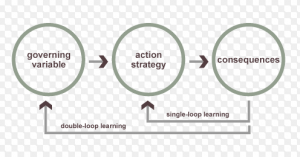Barabási, the Hungarian-American physicist born in Transylvania, Romania is known for his work in the research of network-theory. Barabási played a role in the discovery of the scale-free network concept, which figures in the category of statistical physics of complex systems. A scale-free network is a network whose degree distribution follows a power law, at least asymptotically. That is, the fraction P(k) of nodes in the network having k connections to other nodes goes for large values of k as where y is a parameter whose value is typically in the range 2 < y < 3, although occasionally it may lie outside these bounds (say what!?). In the readings for week 9: “The 80/20 Rule” and “Rich get Richer” Barabási explains his network-theory and how it developed.
I can’t say I totally understand his scale-free network concept. I think it seems complex and way to mathematical for me to understand compared to Castells and his power-in-networks theory. Barabási’s theory is clearly grounded in the positive ontology and the assumption that there is an objective reality ‘out there’ that we can observe, represent and make corresponding thrush claims about. Therefor the theory’s epistemology (what knowledge is and how we can acquire it) dualistic – it’s separating mind and matter. What I am trying to say is that Barabási’s theory measure data in order to understand the way we are all connected online, which for me seems kind of cryptic. What about questions like: “Why do nodes link to preferential nodes?” and “Why do nodes add themselves to networks and make them grow?”. Aren’t nodes the same as individuals and do individuals not have different demographics and psychographics which make them act and interpret differently inside networks, like Stuart Hall would say?
I’m not saying that the theory of the scale-free network doesn’t make sense at all, I’m just saying that I think there are missing pieces in the puzzle.

